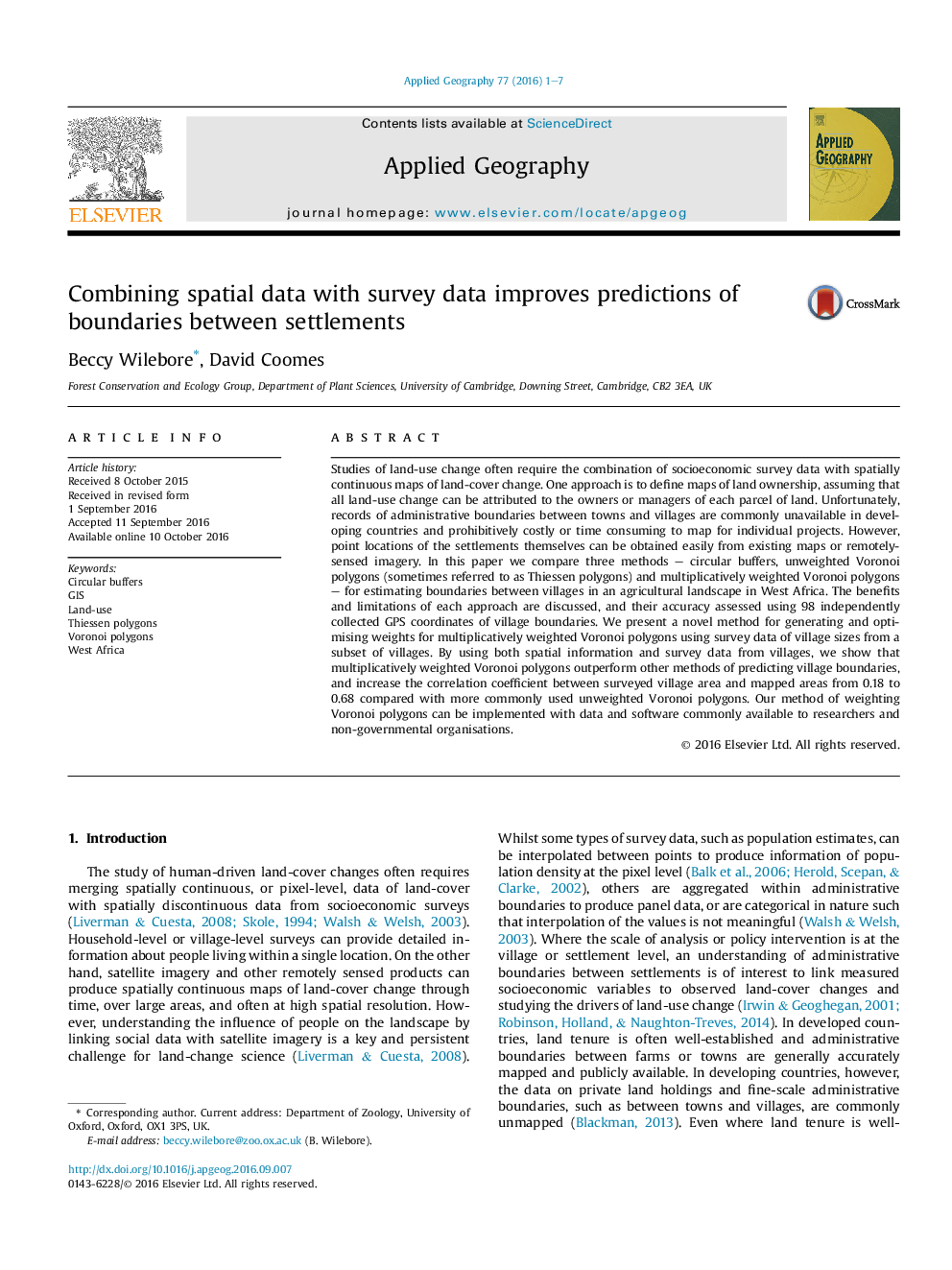| کد مقاله | کد نشریه | سال انتشار | مقاله انگلیسی | نسخه تمام متن |
|---|---|---|---|---|
| 6458488 | 1421040 | 2016 | 7 صفحه PDF | دانلود رایگان |
- A method to predict administrative boundaries using weighted Voronoi polygons is proposed.
- The accuracy of the prediction is tested using an independent dataset of GPS locations.
- Weighted Voronoi polygons combine survey data with spatial information on village locations.
- The method is shown to perform better than commonly used buffers and unweighted polygons.
- Using both spatial and survey data improves predictions compared with methods that only use one.
Studies of land-use change often require the combination of socioeconomic survey data with spatially continuous maps of land-cover change. One approach is to define maps of land ownership, assuming that all land-use change can be attributed to the owners or managers of each parcel of land. Unfortunately, records of administrative boundaries between towns and villages are commonly unavailable in developing countries and prohibitively costly or time consuming to map for individual projects. However, point locations of the settlements themselves can be obtained easily from existing maps or remotely-sensed imagery. In this paper we compare three methods - circular buffers, unweighted Voronoi polygons (sometimes referred to as Thiessen polygons) and multiplicatively weighted Voronoi polygons - for estimating boundaries between villages in an agricultural landscape in West Africa. The benefits and limitations of each approach are discussed, and their accuracy assessed using 98 independently collected GPS coordinates of village boundaries. We present a novel method for generating and optimising weights for multiplicatively weighted Voronoi polygons using survey data of village sizes from a subset of villages. By using both spatial information and survey data from villages, we show that multiplicatively weighted Voronoi polygons outperform other methods of predicting village boundaries, and increase the correlation coefficient between surveyed village area and mapped areas from 0.18 to 0.68 compared with more commonly used unweighted Voronoi polygons. Our method of weighting Voronoi polygons can be implemented with data and software commonly available to researchers and non-governmental organisations.
Journal: Applied Geography - Volume 77, December 2016, Pages 1-7
